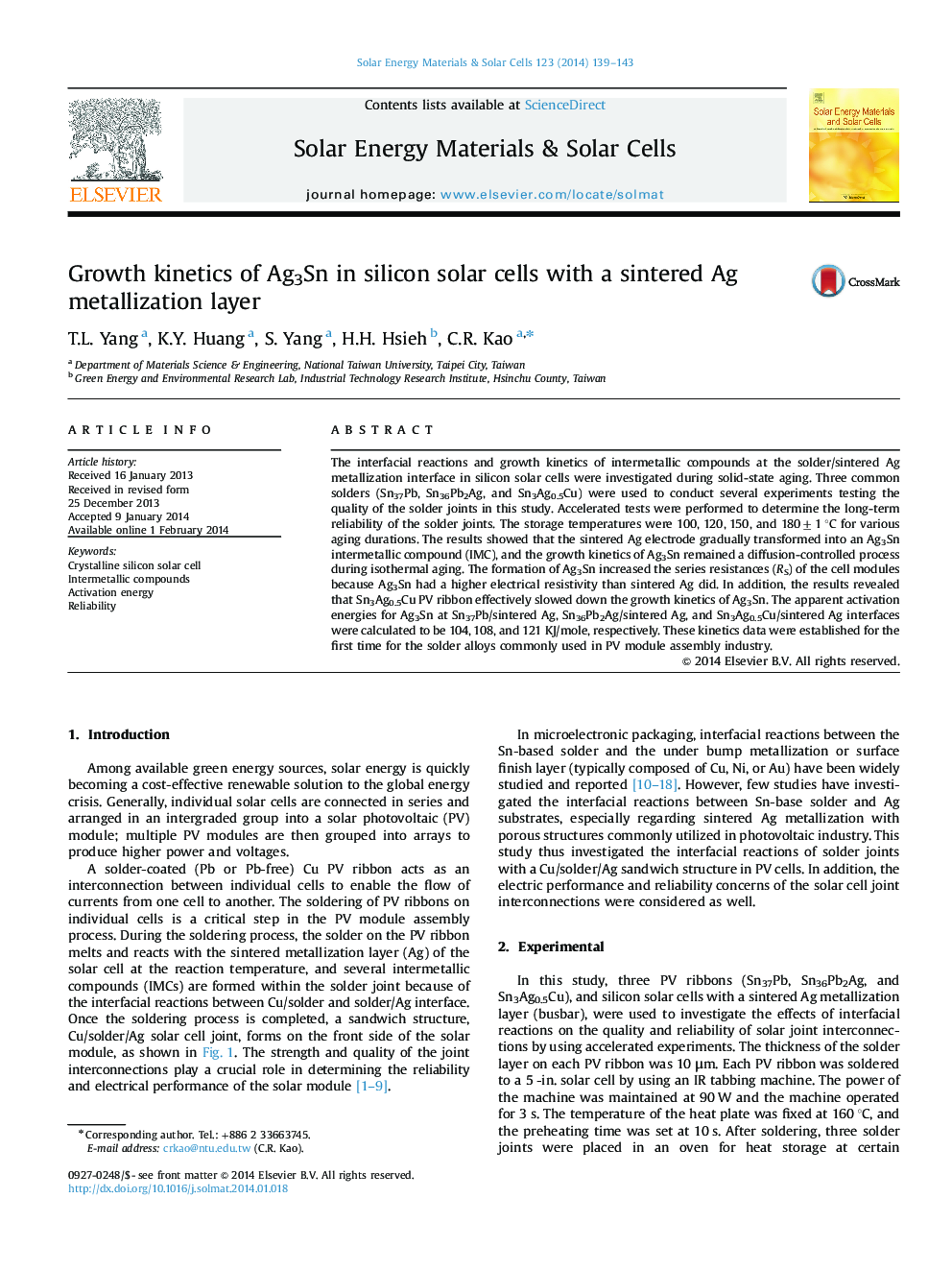| Article ID | Journal | Published Year | Pages | File Type |
|---|---|---|---|---|
| 78056 | Solar Energy Materials and Solar Cells | 2014 | 5 Pages |
•The interfacial reactions and growth kinetics of Ag3Sn at the solder/sintered Ag metallization were investigated.•The sintered Ag metallization gradually transformed into an Ag3Sn IMC, which have detrimental effect on the electric performance of PV modules.•The growth kinetics of Ag3Sn still followed a diffusion-controlled kinetics during isothermal aging process.
The interfacial reactions and growth kinetics of intermetallic compounds at the solder/sintered Ag metallization interface in silicon solar cells were investigated during solid-state aging. Three common solders (Sn37Pb, Sn36Pb2Ag, and Sn3Ag0.5Cu) were used to conduct several experiments testing the quality of the solder joints in this study. Accelerated tests were performed to determine the long-term reliability of the solder joints. The storage temperatures were 100, 120, 150, and 180±1 °C for various aging durations. The results showed that the sintered Ag electrode gradually transformed into an Ag3Sn intermetallic compound (IMC), and the growth kinetics of Ag3Sn remained a diffusion-controlled process during isothermal aging. The formation of Ag3Sn increased the series resistances (RS) of the cell modules because Ag3Sn had a higher electrical resistivity than sintered Ag did. In addition, the results revealed that Sn3Ag0.5Cu PV ribbon effectively slowed down the growth kinetics of Ag3Sn. The apparent activation energies for Ag3Sn at Sn37Pb/sintered Ag, Sn36Pb2Ag/sintered Ag, and Sn3Ag0.5Cu/sintered Ag interfaces were calculated to be 104, 108, and 121 KJ/mole, respectively. These kinetics data were established for the first time for the solder alloys commonly used in PV module assembly industry.
